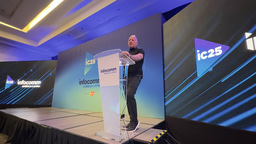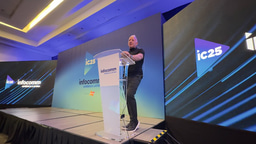Revolutionizing Navigation in Modern Spaces: Digital Signage for Wayfinding

Last week, I had a meeting with an electrical consultant who was not fully aware of the technology behind wayfinding. This inspired me to share insights on how digital signage is transforming navigation in modern spaces, providing clarity and showcasing its benefits across various industries.
Digital signage has become an indispensable tool in modern navigation, transforming how people locate and interact with their surroundings. With advances in technology, wayfinding solutions are now more intuitive, dynamic and customizable than ever before, offering significant benefits across various industries, including retail, healthcare, education, hospitality and transportation.
A-What is Digital Signage for Wayfinding?
Digital signage for wayfinding involves the use of digital displays to provide real-time navigation assistance. These systems leverage interactive maps, directional cues and contextual information to help users navigate complex environments efficiently. Unlike static signs, digital wayfinding systems are adaptable, allowing content updates and integration with other technologies, such as GPS and mobile apps.
B-Key Features of Modern Digital Wayfinding Solutions.
- Interactive Touchscreens:
Users can interact with maps and directories to customize their navigation experience, zooming in on specific locations or searching for particular destinations. - Real-Time Updates:
Content can be updated instantly to reflect changes in specific area such as construction zones, event schedules or emergency routes based on end-user requirements. - Multilingual Support:
Digital signage systems often include multiple language options to cater to diverse audiences. - Integration with Mobile Devices:
QR codes and NFC technology allow users to transfer navigation instructions directly to their smartphones. - Dynamic Content Display:
Wayfinding signage can display contextual information, such as weather updates, advertisements, or event details, alongside navigation guidance.
C-Benefits of Digital Wayfinding Systems.
- Enhanced User Experience:
Digital signage simplifies navigation in large or unfamiliar spaces, reducing frustration for visitors and improving overall satisfaction. - Cost-Effective and Eco-Friendly:
Unlike printed signage, digital displays can be updated without producing physical waste, reducing long-term costs and environmental impact. - Improved Accessibility:
Features like voice assistance and customizable fonts ensure that the system caters to users with varying needs, including those with visual or mobility impairments. - Data Collection and Insights:
Advanced wayfinding systems can collect data on user behavior, such as frequently visited locations or peak navigation times, providing valuable insights for businesses and facility managers.
D-Applications of Wayfinding Digital Signage.
- Airports and Transportation Hubs:
Guiding passengers to gates, lounges and facilities while offering updates on delays and boarding schedules. - Retail and Shopping Malls:
Assisting shoppers in locating stores, amenities and promotional events, enhancing the shopping experience. - Hospitals and Healthcare Facilities:
Helping patients and visitors navigate to departments, clinics, or emergency exits efficiently. - Corporate Campuses:
Streamlining navigation for employees and visitors across large office spaces or multi-building campuses. - Educational Institutions:
Guiding students and visitors to classrooms, libraries and event venues on sprawling campuses.
E-The Future of Digital Wayfinding.
As technology evolves, digital wayfinding systems will likely incorporate augmented reality (AR) for immersive navigation experiences and artificial intelligence (AI) to offer predictive and personalized guidance. IoT integration will further enhance these systems, enabling them to adapt to real-time environmental changes, such as crowd density or road closures.
Finally, Digital signage for wayfinding represents a significant leap forward in navigation solutions, combining convenience, adaptability and innovation. By integrating cutting-edge technology with user-centric design, these systems are not just guiding people but also redefining how we experience spaces. As more industries adopt digital wayfinding, its impact will continue to grow, making navigation more seamless and intuitive than ever before.
-
Xchange Advocates are recognized AV/IT industry thought leaders and influencers. We invite you to connect with them and follow their activity across the community as they offer valuable insights and expertise while advocating for and building awareness of the AV industry.






Please sign in or register for FREE
If you are a registered user on AVIXA Xchange, please sign in